[section label=1. Introduction]
SLC, MLC, Now TLC
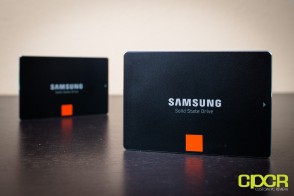 When we look at the SSD market today, there are currently two major barriers to increased adoption – first is cost and second is capacity. Despite recent price cuts bringing SSDs to the lowest prices we’ve ever seen, traditional hard drives such as the Seagate Barracuda 3TB are currently retailing for a mere $0.04/GB, which in comparison to the $0.76/GB found off the Samsung 830 256GB is a lot more capacity for a lot less money.
When we look at the SSD market today, there are currently two major barriers to increased adoption – first is cost and second is capacity. Despite recent price cuts bringing SSDs to the lowest prices we’ve ever seen, traditional hard drives such as the Seagate Barracuda 3TB are currently retailing for a mere $0.04/GB, which in comparison to the $0.76/GB found off the Samsung 830 256GB is a lot more capacity for a lot less money.
Now the solution to this problem is fairly complex, but in the most basic way, it almost always involves cramming a lot more stuff into a smaller space. In SSDs for example, moving to a smaller process from say 27nm to 21nm would be a good way to do this. However, with SSDs, it’s also possible to increase the number of bits stored on each cell (transistor), which in turn increases the data that’s capable of being stored. When SSDs were first introduced, we had SLC, or single level cell NAND. This means that only a single bit was stored on each cell, which made capacities fairly low, but durability was fairly high. From that point, we then moved to 2 bit per cell MLC (Multi Level Cell), which saw a significant reduction in terms of cost, a significant improvement in capacity, but a significant reduction in durability as well. This is what brings us to TLC (Triple Level Cell), which is 3 bit per cell MLC. As you may expect then TLC NAND will come with a significant reduction in cost, a significant increase in capacity and of course it should also be expected that it will come with a significant reduction in durability as well. For more in depth information about TLC NAND, be sure check out “Understanding TLC NAND“ by my colleague, Kristian Vättö at AnandTech.
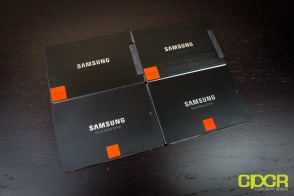 Now, as some of you may know, a couple days ago Samsung held their 2012 Global SSD Summit where they introduced the long awaited successor to their very popular 830 Series SSD, the 840 and 840 Pro Series SSDs. In preparation for the launch, I was able to get a review ready for the enthusiast oriented Samsung 840 Pro 256GB SSD, but unfortunately samples for the general consumer oriented 840 was still unavailable at the time. Since the launch, I’ve received a number of requests on a review for the 840 SSD as Samsung has made it somewhat special. How so you may ask? Well, if you haven’t guessed it yet, they’ve made it the first consumer oriented SSD based off of this “mythical” TLC NAND!
Now, as some of you may know, a couple days ago Samsung held their 2012 Global SSD Summit where they introduced the long awaited successor to their very popular 830 Series SSD, the 840 and 840 Pro Series SSDs. In preparation for the launch, I was able to get a review ready for the enthusiast oriented Samsung 840 Pro 256GB SSD, but unfortunately samples for the general consumer oriented 840 was still unavailable at the time. Since the launch, I’ve received a number of requests on a review for the 840 SSD as Samsung has made it somewhat special. How so you may ask? Well, if you haven’t guessed it yet, they’ve made it the first consumer oriented SSD based off of this “mythical” TLC NAND!
That said, now I’m back stateside and I’ve got the Samsung 840 250GB in for review, so let’s take a look at what this new drive has to offer!
Samsung 840 Specifications
| Samsung 840 | Samsung 840 | Samsung 840 | |
|---|---|---|---|
| Capacity | 120GB | 250GB | 500GB |
| Controller | Samsung S4LN021X01-8030 | Samsung S4LN021X01-8030 | Samsung S4LN021X01-8030 |
| NAND | 21nm Toggle Mode 2.0 TLC | 21nm Toggle Mode 2.0 TLC | 21nm Toggle Mode 2.0 TLC |
| Sequential Reads | 530 MB/s | 540 MB/s | 540 MB/s |
| Sequential Writes | 130 MB/s | 250 MB/s | 330 MB/s |
| DRAM Cache | 256MB LPDDR2 | 512MB LPDDR2 | 512MB LPDDR2 |
| Interface | SATA 3 6GB/s | SATA 3 6GB/s | SATA 3 6GB/s |
| Warranty | 3 Years | 3 Years | 3 Years |
Now before we dive into the review, let’s take a look at the specifications for the new drive. Today, we’ll be reviewing the 250GB edition of the Samsung 840, but it will also come in 120GB and 500GB flavors when it hits store shelves in October. For those wondering why the strange numbers, that’s because the 840 will come out of the box with some level of overprovisioning, which unlike the case with the 830 or 840 Pro, cannot be reduced via the Magician software.
Now my best guess for this is that it’s because the Samsung 840 will use TLC (Triple Level Cell) NAND. Now, Samsung is saying that the durability of TLC NAND should be comparable to MLC (2 bit per cell) NAND, but it seems like Samsung is erring on the side of caution and using some level overprovisioning here to make up for any cells dying or erroring out. One thing to note here is that it’s quite strange that Samsung is giving the various capacities of the 840 different levels of overprovisioning as there’s 8GB on the 120GB edition, 6GB on the 250GB edition, and 12GB on the 512GB edition.
Also if you haven’t noticed already, the sequential writes on the Samsung 840 are on the slow side ranging from 130 MB/s to 330 MB/s depending on capacity. During a Q&A session at the Samsung SSD Summit, Samsung mentioned that the TLC NAND will be ~50% slower than MLC (2 bit per cell) NAND, but no exact details were given. That said, the specifications between the three drives suggest that the sequential write bottleneck is due to the TLC NAND since the increase of packages and/or dies per package will yield higher sequential write performance.
Samsung 830 vs Samsung 840 vs Samsung 840 Pro Specifications
| Samsung 830 | Samsung 840 | Samsung 840 Pro | |
|---|---|---|---|
| Capacity | 256GB | 250GB | 256GB |
| Controller | Samsung S4LJ204X01-Y040 | Samsung S4LN021X01-8030 | Samsung S4LN021X01-8030 |
| NAND | 27nm Toggle Mode 1.0 MLC | 21nm Toggle Mode 2.0 TLC | 21nm Toggle Mode 2.0 MLC |
| Sequential Reads | 520 MB/s | 540 MB/s | 540 MB/s |
| Sequential Writes | 400 MB/s | 250 MB/s | 450 MB/s |
| Warranty | 3 Years | 3 Years | 5 Years |
Comparing the 840 to the 830 and the 840 Pro, there are a few differences to note. First off, all three drives use different NAND. Whereas the 830 is using Samsung’s older 27nm MLC (2 bit per cell) NAND, the 840 Pro is using Samsung’s new 21nm MLC (2 bit per cell) NAND, and the 840 is using Samsung’s new 21nm TLC (3 bit per cell) NAND. Additionally, both the Samsung 840 and the Samsung 840 Pro are using faster Toggle 2.0 NAND, which is rated at up to 400 Mbits/s, which is significantly faster than Toggle 1.0 NAND, used in the Samsung 830, which is rated at up to 133 Mbits/s.
There’s also a difference in sequential read and write speeds here as well. Whereas sequential writes all top out at the 500+MB/s range, sequential writes on the Samsung 840 takes a significant dive coming in at only 250 MB/s.
Finally, there’s also the warranty as well. The Samsung 840 Pro receives an industry leading 5 year warranty whereas the 840 and 830 gets a more standard 3 year warranty. Let’s move on…
[section label=2. A Closer Look (Exterior)]
A Closer Look at the Samsung 840 250GB
Moving right in then, let’s take a closer look at the Samsung 840. With the exception of the bottom sticker, the exterior of the Samsung 840 and 840 Pro are identical. Don’t forget to check out our review of the Samsung 840 Pro for more details!
7mm formfactor, all the usual side and bottom screws for mounting in laptops, desktops, etc.
SATA 3 6Gb/s and SATA power in its usual spot.
[section label=3. A Closer Look (Interior)]
A Closer Look at the Samsung 840 250GB
Here’s a look at the PCB layout for both the Samsung 840 and the Samsung 840 Pro. Can you spot the difference?
Here’s a look at the PCB for the Samsung 840 250GB. We’ve got 8 NAND packages, a controller, and DRAM cache.
Here’s a look at the bottom of the PCB.
Like the Samsung 840 Pro, the Samsung 840 SSD carries the new 4th generation tri-core Samsung MDX Cortex-R4 based SSD controller running at 300MHz. The specific model number on this controller is S4LN021X01-8030.
Like the Samsung 840 Pro 256GB, the Samsung 840 250GB has a 512MB LPDDR2 (Low Power DDR2) DRAM cache.
The only major difference in terms of hardware between the Samsung 840 and the 840 Pro is that with the Samsung 840, we get Samsung’s latest 21nm Toggle Mode TLC (3 bits per cell) NAND 2.0 (Model #K9CFGY8U5A-CCK0) whereas with the 840 Pro, we get Samsung’s latest 21nm Toggle Mode MLC (2 bits per cell) NAND 2.0.
[section label=4. Test Setup and ATTO Disk Bench]
Ivy Bridge Test Bench
| CPU | Intel Core i5 3570K |
|---|---|
| Motherboard | Gigabyte Z77X-UD3H |
| Memory | Kingston HyperX Genesis 16GB DDR3 2133MHz |
| Graphics | Intel HD4000 Graphics |
| Storage | Patriot Pyro SE 120gb |
| Power Supply | Corsair HX650 |
| Case | HSPC High Speed Tech Station |
| Optical Drive | ASUS OEM DVD Drive |
| Operating System | Windows 7 Ultimate x64 SP1 |
Special thanks to Gigabyte, Kingston, and HSPC for sponsoring our test bench!
Samsung 840 250GB Performance
ATTO Disk Benchmark v2.46
ATTO Disk Benchmark is one of the industry’s oldest and most popular benchmarks for testing disk read/write speeds. This benchmarks allows read and write testing using predefined block sizes and gives us a good idea of read/write speeds with different sized files. Most SSD manufacturers these days prefer using this benchmark when advertising SSDs as it tests using compressible data, which tends to yield better performance.
Kicking off here with ATTO Disk Benchmark, performance here isn’t very impressive when compared to the current stock of SSDs on the market. Sequential reads are superb, topping out at about 560 MB/s, which is right about where the SATA 3 interface tops out whereas sequential writes top out at around a paltry 266 MB/s.
With 500+MB/s sequential reads and 500+MB/s sequential writes being so commonplace these days, the 266 MB/s sequential writes does seem a bit sluggish at this point. That said, sequential reads and writes aren’t the whole story, so let’s continue…
[section label=5. Crystal Disk Mark / AS SSD]
Samsung 840 250GB Performance
Crystal Disk Mark 3.0.1 x64
Crystal Disk Mark is another popular benchmark which allows us to measure both sequential read/write speeds as well as random read/write speeds. With this benchmark, tests can be run using both random fill (incompressible data) and 0 fill (compressible data). Realistically in typical computer usage scenarios, data being transferred will consist of a mixture of both incompressible and compressible data.
What the Samsung 840 lacks in sequential writes, it makes up for big time in the random writes department cranking out a solid 128.1 MB/s with both incompressible and compressible data sets. This is very important to note as typical PC usage focuses a lot more heavily on random reads and writes rather than sequential reads/writes. That said, sequential and random reads are also top notch with this drive as it’s capable of around 32 MB/s random reads and a SATA 3 interface topping 546 MB/s sequential writes.
AS SSD Benchmark
AS SSD is a very commonly used benchmark used to measure SSD performance in a number of categories. Here, tests are run using incompressible data, which most simulate real world usage. It also outputs a final score at the conclusion of the test based off the read and write performance of the drive.
AS SSD mirrors the results found in Crystal Disk Benchmark quite well.
Moving onto the compression benchmark then, we can see that generally speaking, the Samsung 840 is capable of performing very consistently throughout the entire range of compression from 0-100%. However, it should be noted that there’s a significant amount of fluctuation in the compression benchmark with the Samsung 840 when compared with the Samsung 840 Pro.
[section label=6. Anvil Storage Utilities / PC Mark 7]
Samsung 840 250GB Performance
Anvil Storage Utilities
Anvil Storage Utilities is an excellent all around benchmark for testing many different functions of SSD performance. For our purposes, we ran the benchmark through both 0 fill mode (compressible data) on the left and 100% compression (incompressible data) on the right.
Here again, we get a mirror of what we’ve previously seen with other benchmarks. What’s interesting here is that the Samsung 840 has slightly increased response times across the board when compared to the Samsung 840 Pro. Samsung estimates the TLC NAND used on the 840 to be ~50% slower than the MLC NAND used on the 840 Pro, so this makes sense.
PC Mark 7
The PC Mark 7 storage test tests the SSD under many different real world tests such as gaming, video editing, etc. This is most representative of the SSD’s performance under real world situations and therefore is the only benchmark used for comparison between different SSDs.
In PC Mark 7, the Samsung 840 250GB did quite an admirable job beating out most SSDs in this benchmark, falling in behind only to the Samsung 840 Pro and the Kingston HyperX 240GB. The reason for this is because while the Samsung 840 doesn’t have the highest sequential writes on the market, it’s capable of very fast 4K reads and writes, which is what’s most stressed in PC Mark 7.
[section label=7. Software]
Samsung 840 Software
Along with the launch of the Samsung 840 and 840 Pro, Samsung will be bundling some brand new software as well.
Samsung Data Migration Tool
The first piece of software is the new Samsung Data Migration Tool. Samsung previously bundled Norton Ghost with the 830, but starting with the 840 and 840 Pro, Samsung will be rolling out their own utility for data migration. Here’s a first look at a beta edition of the new software.
The Samsung Data Migration utility will be compatible with any Samsung SSD such as the 470, 830, 840, 840 Pro, etc. As you can see here, the interface here is very clean, simple, and easy to use. Samsung has made it so that their utility is fully compatible with migrating from larger source drives or smaller source drives as well.
Hitting the start button, the migration utility automatically begins duplicating the disk. Drives may be connected and duplicated via the USB or SATA interface.
Once drive duplication is complete, the software utility reminds you to change the disk and prompts a shutdown as well. This is probably the easiest software I’ve worked with and I’d like to give Samsung a big thumbs up in this regard.
Samsung Magician
The second piece of software is the updated Samsung Magician software, which at the time of publishing is not available. This was shown at the Samsung SSD Global Summit and overall it looks like a significant improvement over the already awesome Magician v3.xx software bundled with the Samsung 830. This should also give users access to the 256-bit AES encryption feature with the 840 and 840 Pro, which should be very useful for those with sensitive data.
[section label=8. Power Consumption]
Samsung 840 250GB Power Consumption
Since a great majority of SSD nowadays are used in mobile applications, we’ll be conducting power consumption testing on all future SSD reviews. For our power consumption testing, we’ll generally run three tests which consists of idle power consumption, constant 4K read/write power consumption, and constant sequential read/write power consumption. Please note that these power consumption measurements are constant read/write measurements, NOT peak measurements.
All tests below are measured by tapping into the 5v line running from the power supply to the drive. All testing here is conducted with “HIPM/DIPM” enabled and “AHCI Link Power Management – Adaptive” set to 0 milliseconds for maximum power efficiency.
Samsung’s 840 and 840 Pro drives are among the most power efficient drives we’ve seen to date, which will make them excellent additions for notebook/laptop users. Samsung rates the 840 at 0.046W idle (DIPM On) and 0.071W typical usage. From my testing, I was able to get both the 840 and 840 Pro down to around 0.05W and 0.055W respectively, which is within the margin of error of Samsung’s rating. Lookin’ good!
[section label=9. Conclusion]
Samsung 840 250GB Conclusions
The way I see it, Samsung’s introduction of the 840 now puts them in a couple of “special spots” in the SSD market. First and foremost, Samsung manufactures the 840 completely in house. Controller, NAND, DRAM cache, everything. This means cherry-picking of the best NAND off each wafer, better NAND/controller integration, ability to do much more validation/testing, and faster firmware turnaround times if any tweaking is ever needed. Second, Samsung now has access to a TLC NAND based SSD product. TLC NAND is roughly 30%-40% cheaper than MLC (2 bit per cell) NAND, so it gives Samsung a lot of room to become much more “competitive” if so desired. Considering current pricing on MLC NAND based products on the market, I wouldn’t be surprised to see the Samsung 840 regularly selling for $0.50/GB by Q2 2013.
Performance on the Samsung 840 was definitely unexpected especially since it seemed like Samsung spent a lot more time promoting the 840 Pro and downplaying the 840 during their SSD Summit. While it’s true sequential writes were lacking, most client workloads are focused towards random reads and writes, which is precisely where the Samsung 840 excels in. This is why the Samsung 840 was able to top the charts in PC Mark 7 despite most other drives being advertised as having significantly faster sequential writes. Of course, those of you planning on using the drive in scenarios where constant sequential writes are needed, you might want to check into the Samsung 840 Pro, but for general computing, the Samsung 840 should be a beast of a drive that’s more than capable of fulfilling most general consumer needs.
| Samsung 840 | Samsung 840 | Samsung 840 | |
|---|---|---|---|
| Capacity | 120GB | 250GB | 500GB |
| Model | MZ-7TD120BW | MZ-7TD250BW | MZ-7TD500BW |
| Price | $109.99 | $199.99 | $549.99 |
Pricing on the Samsung 840 250GB is expected to be around $199.99 for the bare drive, which puts it at well under $1/GB even at MSRP pricing. Looking at the 120GB and 500GB drives, it seems like pricing is either around or under $1/GB, which will make the entire Samsung 840 lineup extremely competitive when it launches next month. Samsung will also be offering the 840 with a combination desktop/notebook kit for an additional $20, which includes stuff like a 2.5″ to 3.5″ bracket, 2mm riser, etc., which isn’t too bad for those who need the extra stuff.
Warranty on the Samsung 840 is a very standard 3 years, which is a bummer especially with the 840 Pro getting the coveted 5 year treatment. Given that TLC NAND is a fairly new development in consumer SSDs, it would definitely inspire a lot more confidence into the generally less durable NAND if Samsung were to offer a 5 year warranty. However, it seems like Samsung is quite confident that the TLC product will be as durable as MLC (2 bit per cell) offerings, so we’ll see what happens in the coming months. Given Samsung’s excellent track record in the SSD market, there shouldn’t be any problems, but it’s definitely something to keep in mind. That said, I will be using the Samsung 840 extensively until its retail launch, so I’ll be sure to post any updates on the drive if any problems do arise.
Bottom Line
With the 840, Samsung has done a remarkable job showing us that TLC NAND can and will be a viable solution for more affordable, larger capacity SSDs from this point forward. While long term durability is still up in the air pending mass user adoption and long term testing, Samsung’s pricing and their reputation as a tier 1 SSD manufacturer makes the 840 a very attractive option when it begins shipping in October.
Special thanks to Samsung for making this review possible! Don’t forget to check out our review of the Samsung 840 Pro 256GB!
For more information, be sure to check out additional independent Samsung 840 reviews from our friends below!

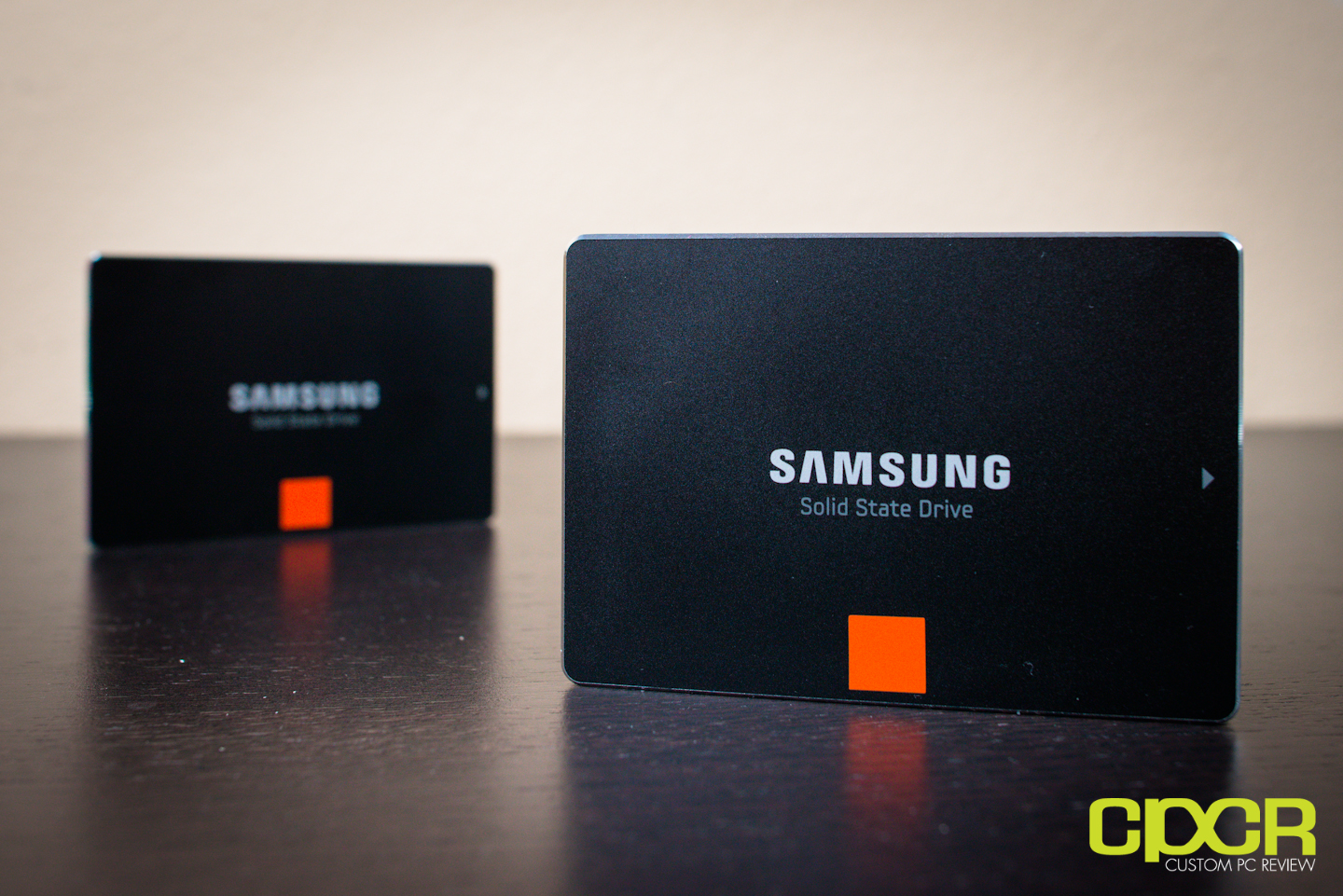
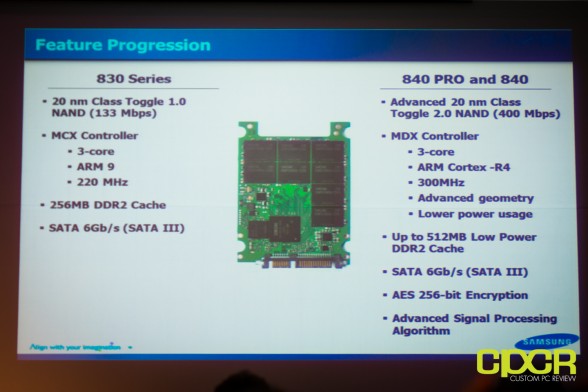
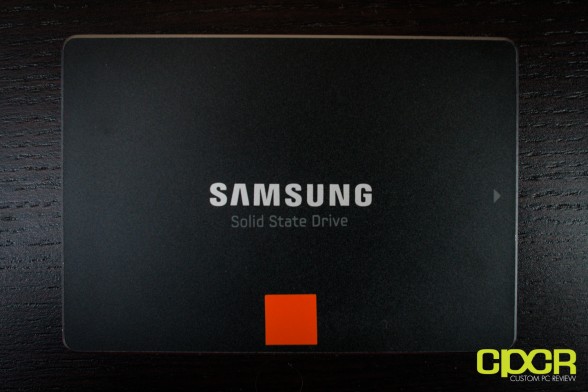
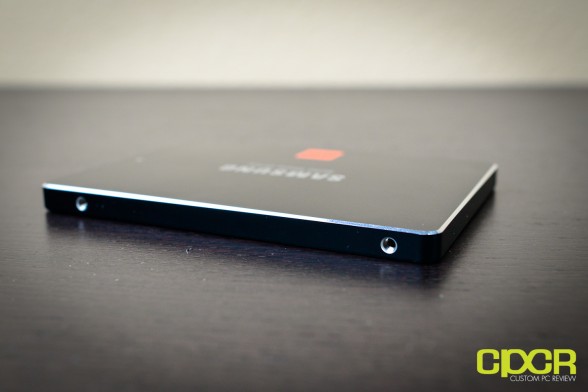
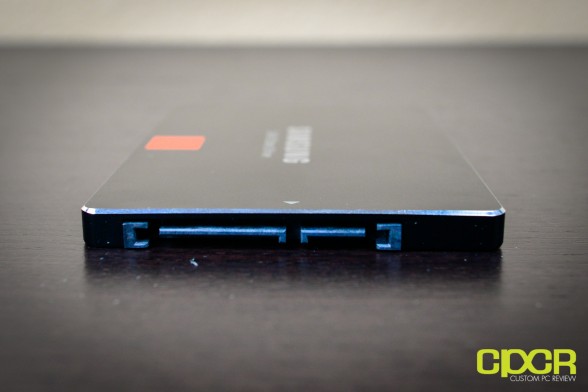
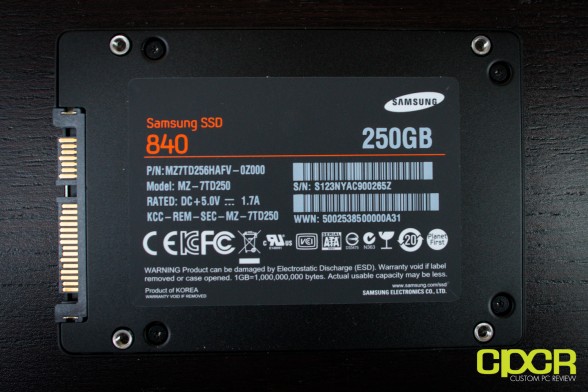
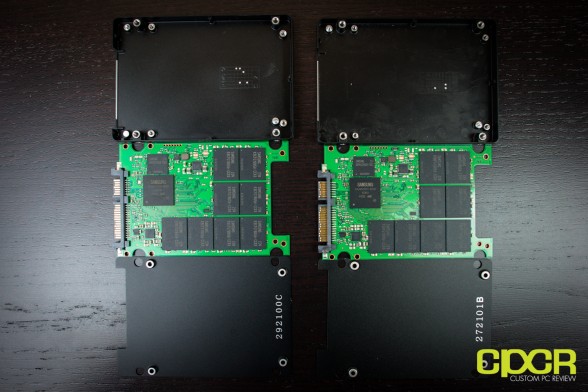
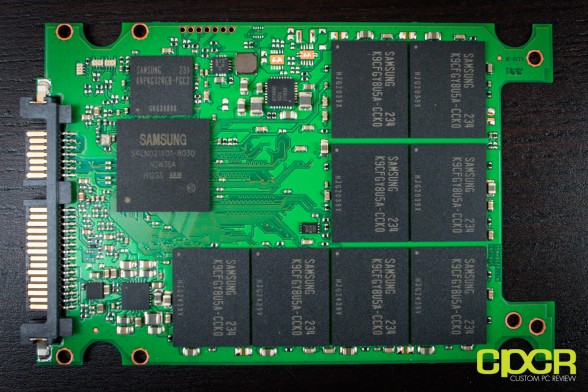
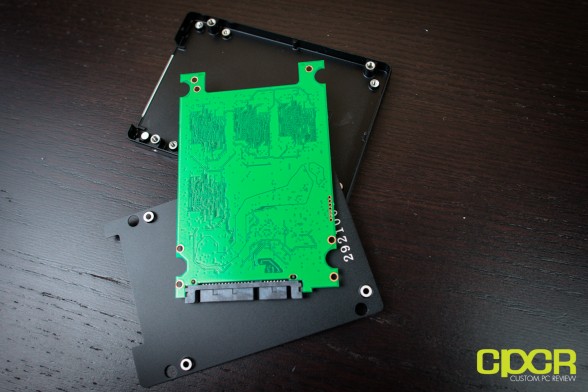
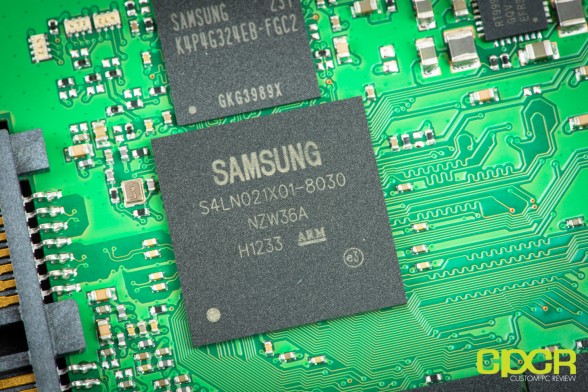
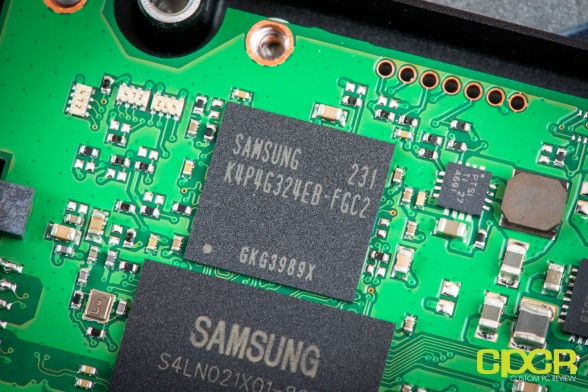
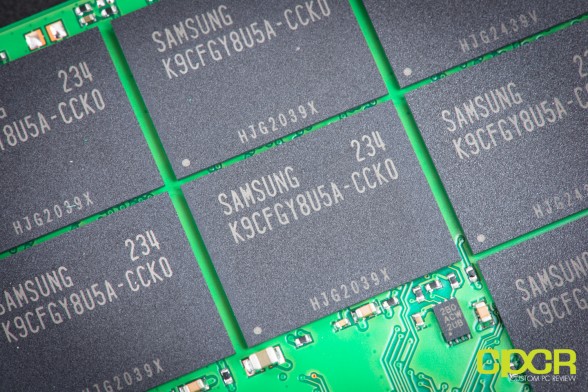
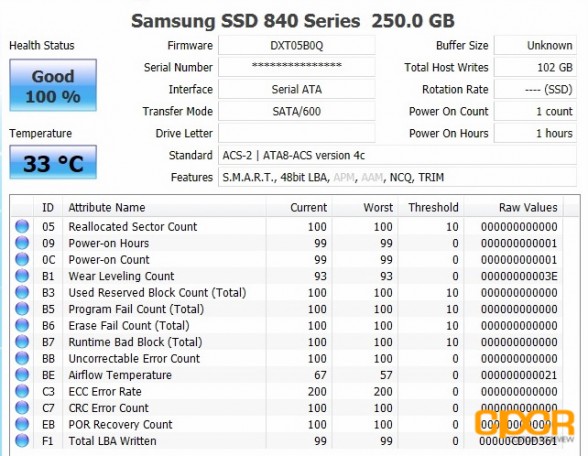
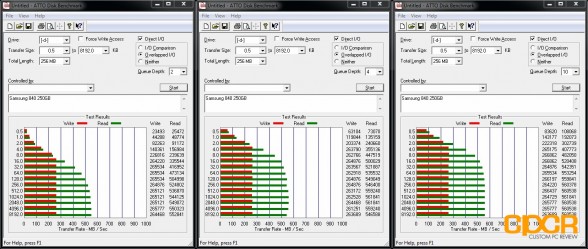
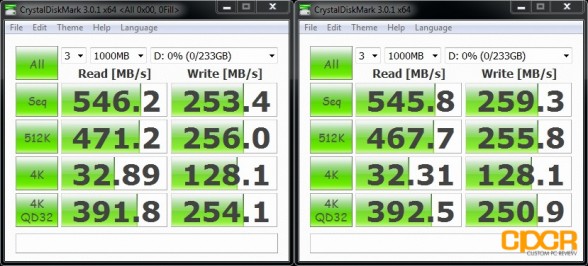
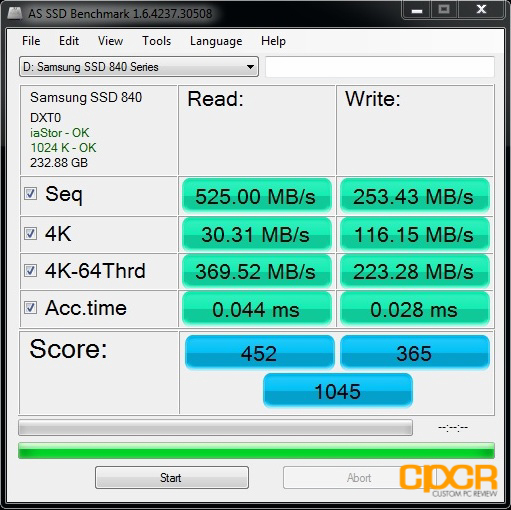
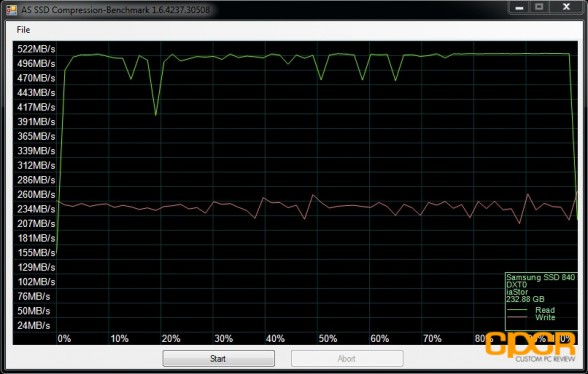
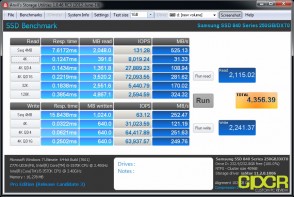
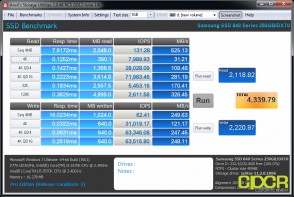
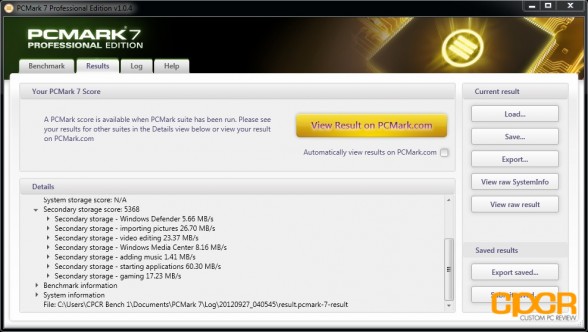
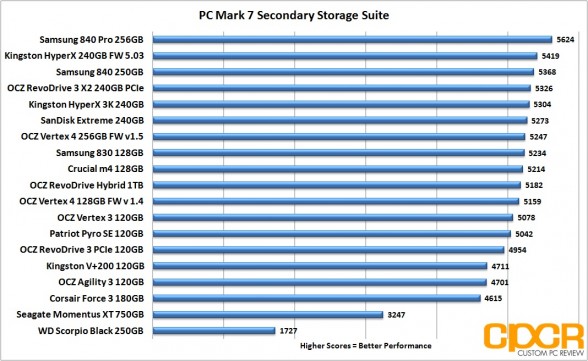
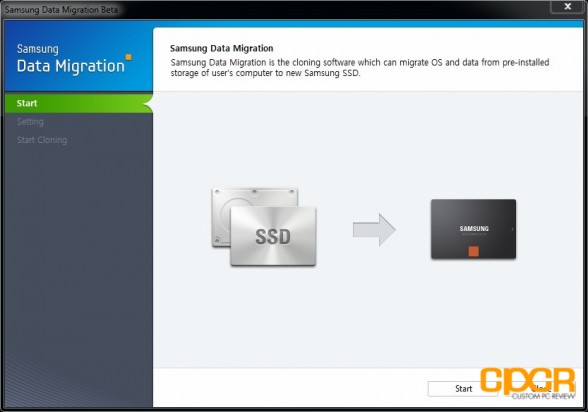
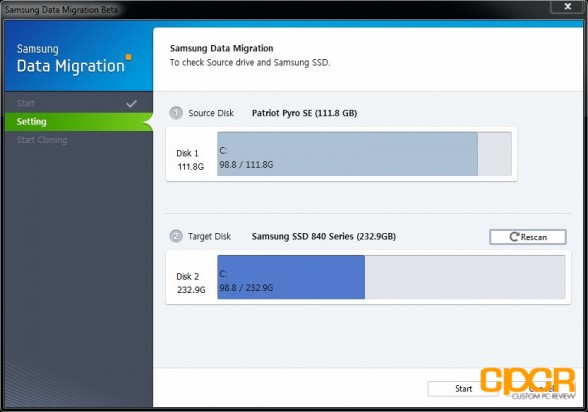
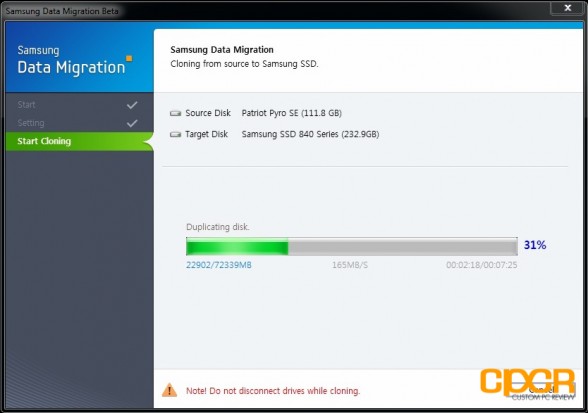
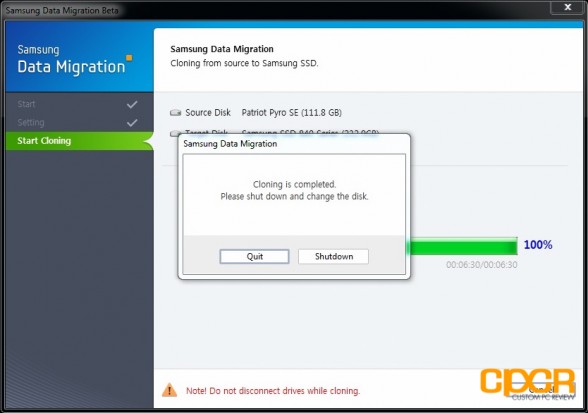
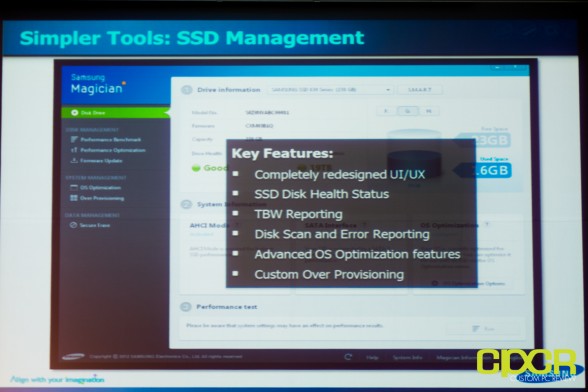
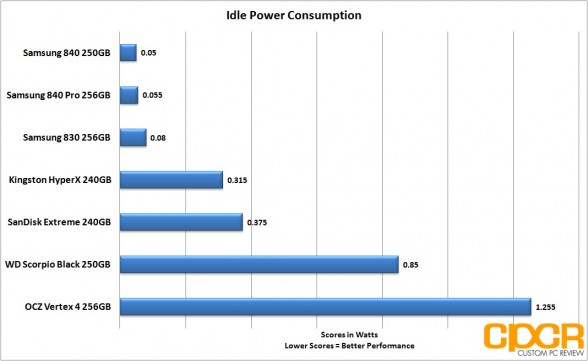
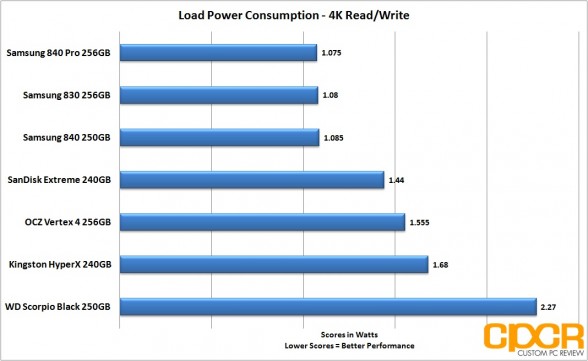
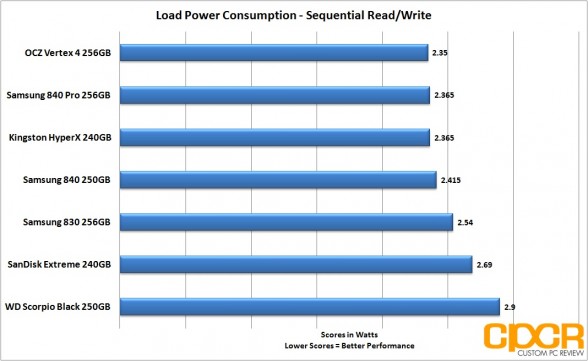
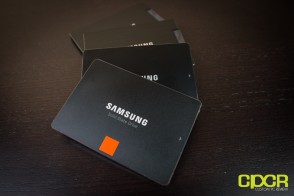
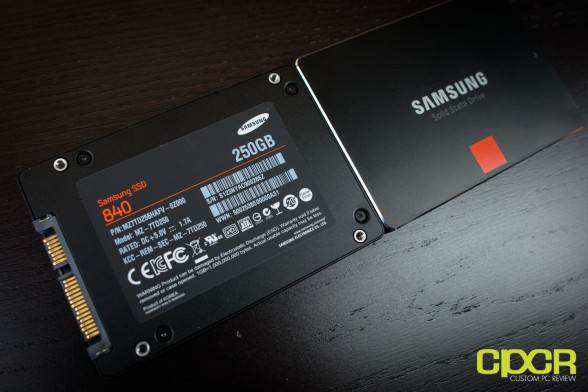

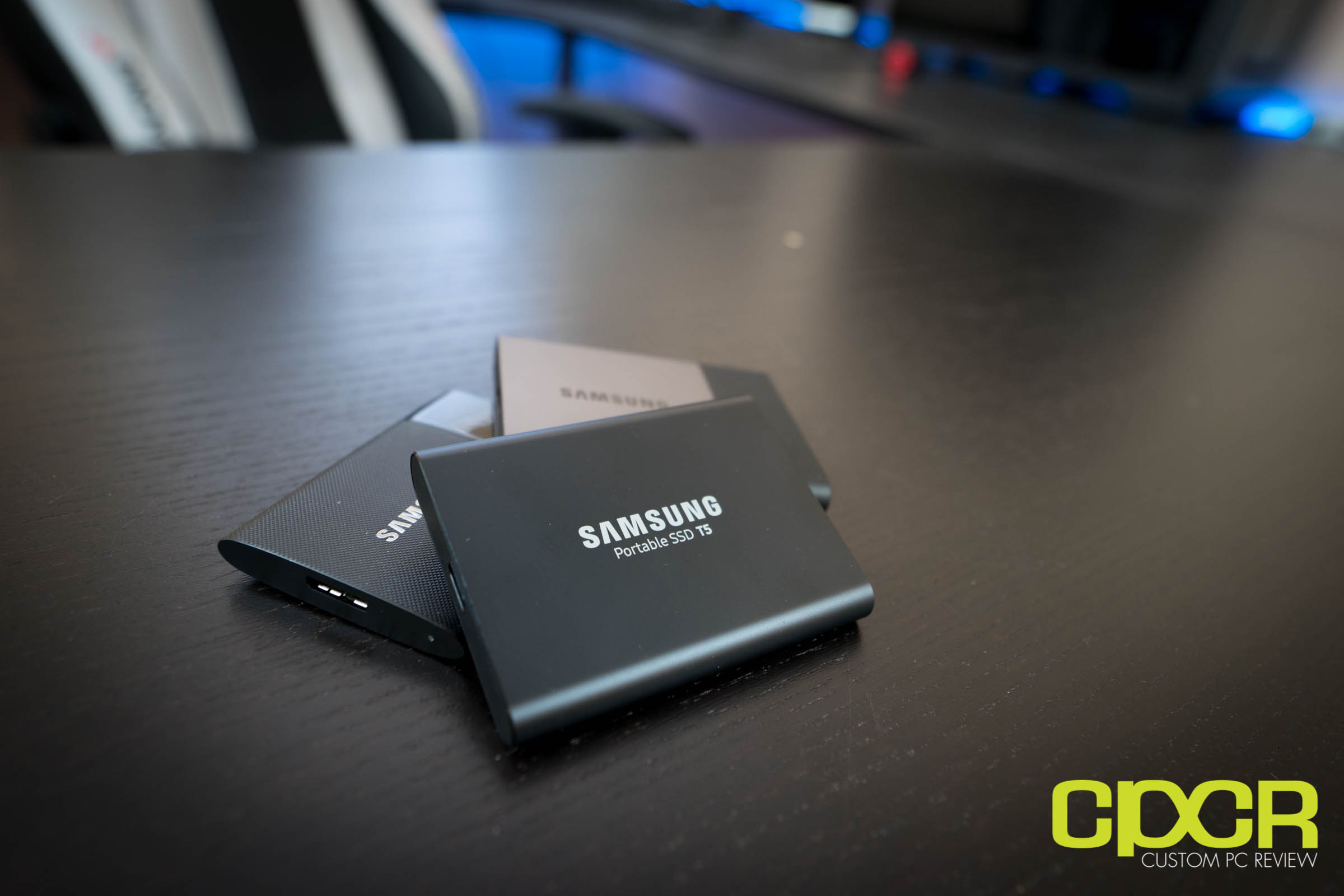
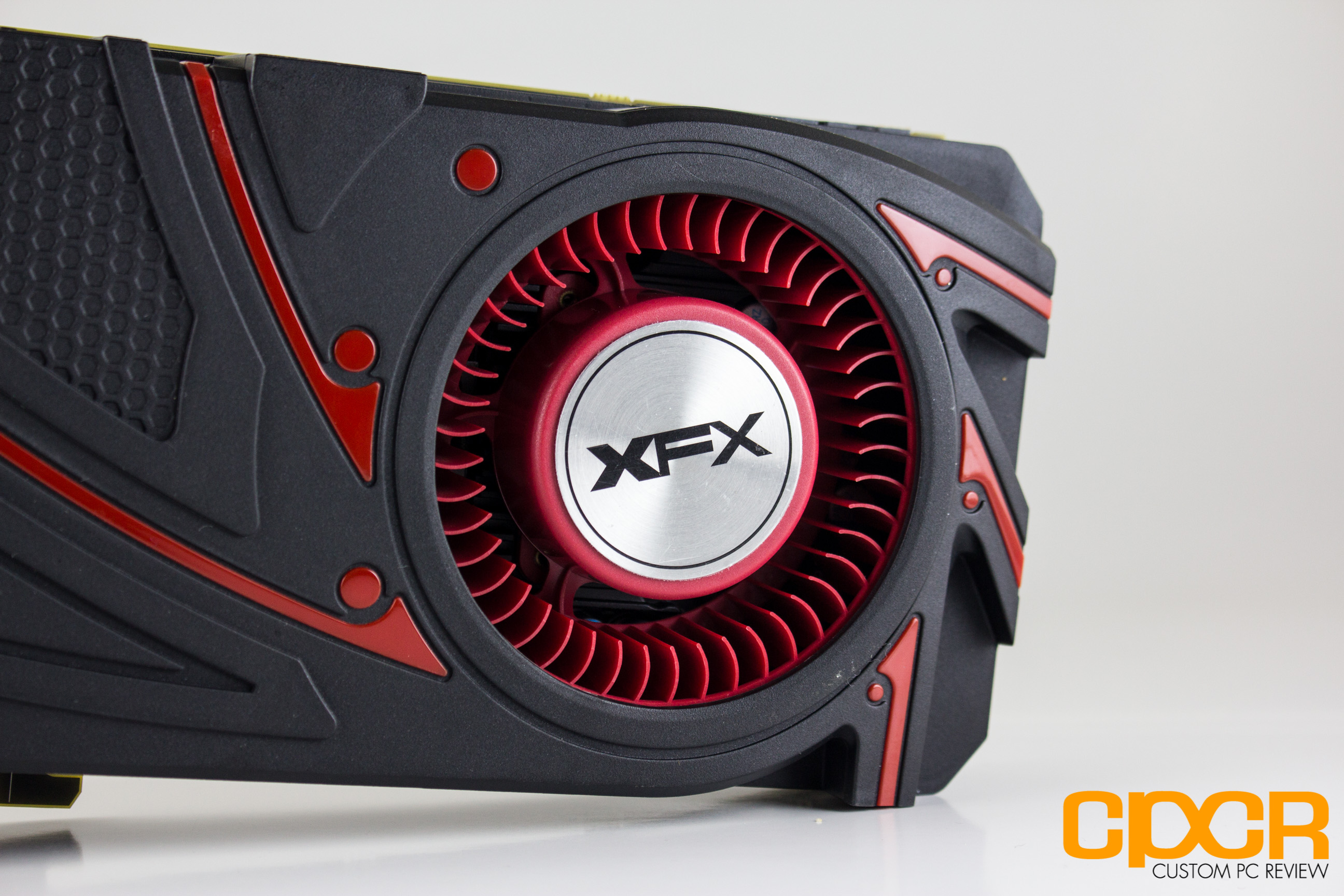
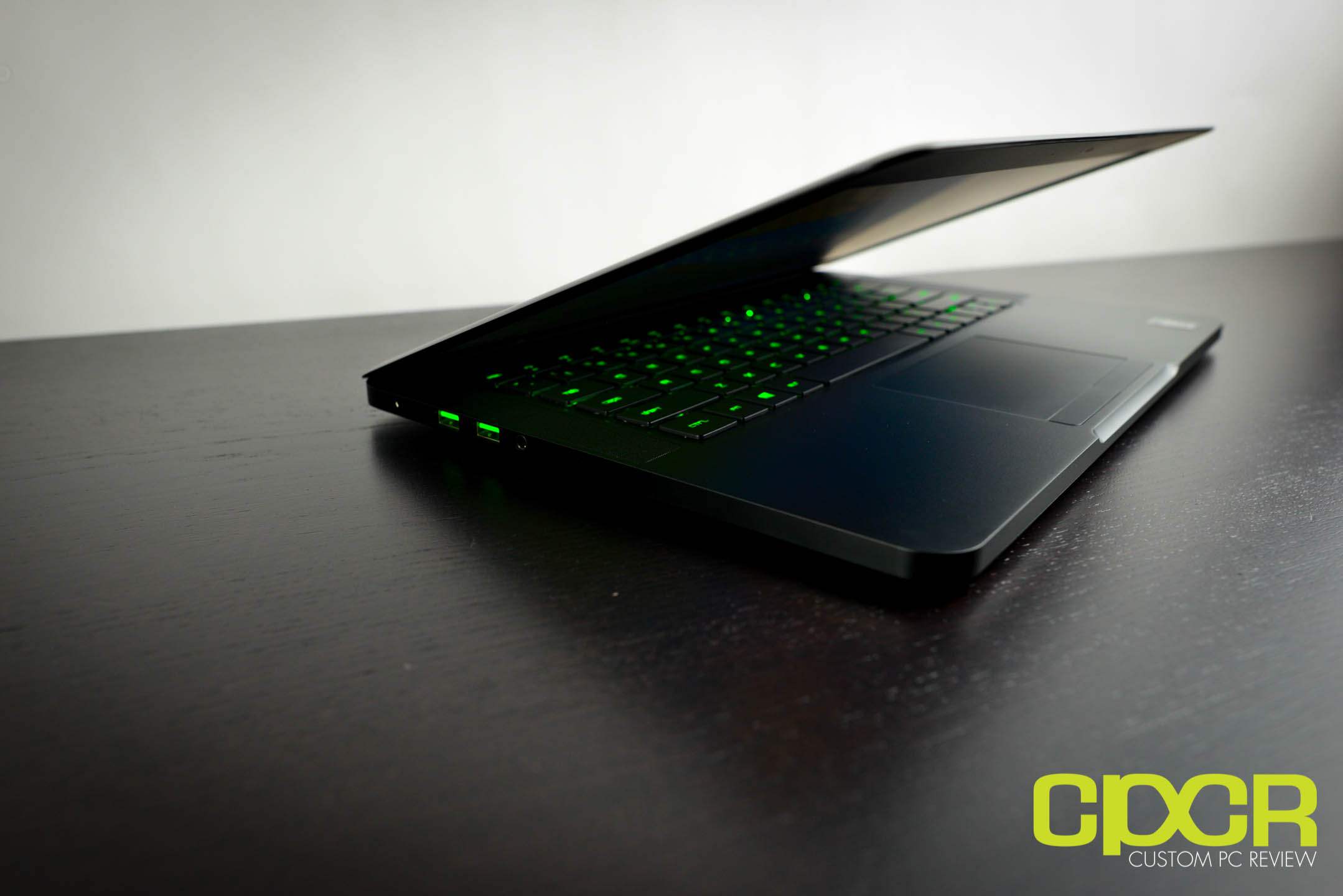
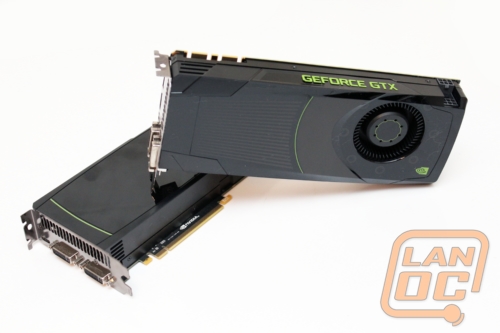
What I don’t understand is the short warranty period compared to the 840 pro, and the price is fairly similar.
I don’t know which one would be the best, but with the “minimum” price difference in mind and the unknown durability of this TLC product I’m not really sure where exactly this SSD stands.
Between the warranty of the Pro, the fact that it has less power consumption, 6Gb more, and it will probably last longer.
I’m having trouble deciding which one to choose. I plan to have it for a long time using it for the windows and some programs along with a HDD store the everyday data (photos, word documents, etc.), therefore, better get the Pro?
The 840 looks like it will be a pretty good drive, but it is slightly inferior to the 830 it’s replacing. The 840 Pro looks like a fantastic drive but the prices are extremely high. The 830 is being heavily discounted right now, and is by far the best value for the money of the three. I have one and it’s fantastic, I’m considering getting another.
The 840 should be a pretty good drive, and because of the TLC memory, prices on it should come down rapidly – but it’s currently priced above the 830 and it doesn’t make much sense to buy one until prices drop quite a bit – which they should in a few months.
Where is this migration software. I just purchased a 256GB 840 Pro from Newegg. There is no data migration software here. Just the magician stuff, which points me to a link to download Norton Ghost, for which I was not provided a license key. ???
You need to download it from Samsung site.
The migration software is available at the Samsung website (linked below) if it didn’t come with the SSD. Unfortunately, I received a pre-production sample, so I’m not sure what’s actually in the retail boxes.
http://www.samsung.com/us/support/owners/product/MZ-7TD250KW
I am worried about CrystalDiskInfo B1 parameter: 3E –> 93% after only one hour use…
I bought a 840 pro 128Go… 00 –> 100% at first start. 0C –> 99% after Windows 7 install…
Very strange, and what about the 5 years warranty, limited to max write cycles parameter…